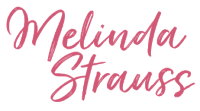What is Kosher food?
Kosher dietary laws are observed all year round.
Contrary to popular misconception, rabbis or other religious officials do not “bless” food to make it kosher. There are blessings that observant Jews recite over food before eating it, but these blessings have nothing to do with making the food kosher. Food can be kosher without a rabbi or priest ever becoming involved with it: the vegetables from your garden are kosher (as long as they don’t have any bugs, which are not kosher!). However, in our modern world of processed foods, it is difficult to know what ingredients are in your food and how they were processed, so it is helpful to have a rabbi examine the food and its processing and assure kosher consumers that the food is kosher. This certification process is discussed below.
There is no such thing as “kosher-style” food. Kosher is not a style of cooking. When a restaurant calls itself “kosher-style,” it usually means that the restaurant serves these traditional Jewish foods, and it almost invariably means that the food is not actually kosher.
Food that is not kosher is commonly referred to as treif (lit. torn, from the commandment not to eat animals that have been torn by other animals).
General Rules
Although the details of kashrut are extensive, the laws all derive from a few fairly simple, straightforward rules:
- Certain animals may not be eaten at all. This restriction includes the flesh, organs, eggs and milk of the forbidden animals.
- Of the animals that may be eaten, the birds and mammals must be killed in accordance with Jewish law.
- All blood must be drained from meat and poultry or broiled out of it before it is eaten.
- Certain parts of permitted animals may not be eaten.
- Fruits and vegetables are permitted, but must be inspected for bugs (which cannot be eaten)
- Meat (the flesh of birds and mammals) cannot be eaten with dairy. Fish, eggs, fruits, vegetables and grains can be eaten with either meat or dairy. (According to some views, fish may not be eaten with meat).
- Utensils (including pots and pans and other cooking surfaces) that have come into contact with meat may not be used with dairy, and vice versa. Utensils that have come into contact with non-kosher food may not be used with kosher food. This applies only where the contact occurred while the food was hot.
- Grape products made by non-Jews may not be eaten.
- There are a few other rules that are not universal.
Separation of Meat and Dairy
On three separate occasions, the Torah tells us not to “boil a kid in its mother’s milk.” (Ex. 23:19; Ex. 34:26; Deut. 14:21). The Oral Torah explains that this passage prohibits eating meat and dairy together. The rabbis extended this prohibition to include not eating milk and poultry together. In addition, the Talmud prohibits cooking meat and fish together or serving them on the same plates, because it is considered to be unhealthy. It is, however, permissible to eat fish and dairy together, and it is quite common (lox and cream cheese, for example). It is also permissible to eat dairy and eggs together.
This separation includes not only the foods themselves, but the utensils, pots and pans with which they are cooked, the plates and flatware from which they are eaten, the dishwashers or dishpans in which they are cleaned, the sponges with which they are cleaned and the towels with which they are dried. A kosher household will have at least two sets of pots, pans and dishes: one for meat and one for dairy.
One must wait a significant amount of time between eating meat and dairy. Opinions differ, and vary from three to six hours after meat. This is because fatty residues and meat particles tend to cling to the mouth. From dairy to meat, however, one need only rinse one’s mouth and eat a neutral solid like bread, unless the dairy product in question is also of a type that tends to stick in the mouth.
The Yiddish words fleishik (meat), milchik (dairy) and pareve (neutral) are commonly used to describe food or utensils that fall into one of those categories.
Note that even the smallest quantity of dairy (or meat) in something renders it entirely dairy (or meat) for purposes of kashrut. For example, most margarines are dairy for kosher purposes, because they contain a small quantity of whey or other dairy products to give it a buttery taste. Animal fat is considered meat for purposes of kashrut. You should read the ingredients very carefully, even if the product is kosher-certified.
*source for the information above: http://www.kosherfood.about.com


 My debut cookbook EAT JEWISH comes out Sept 2
My debut cookbook EAT JEWISH comes out Sept 2 Sharing My Jewish Life
Sharing My Jewish Life  T1 Diabetic+T1D mom
T1 Diabetic+T1D mom Contact for collabs
Contact for collabs melinda@theArteAgency.com
melinda@theArteAgency.com






